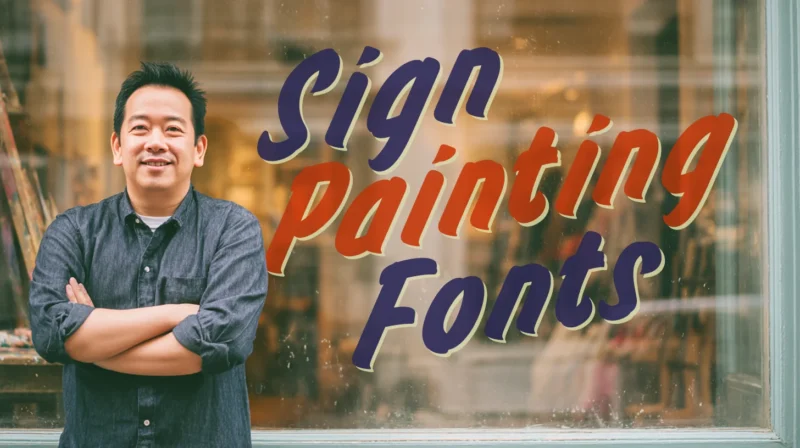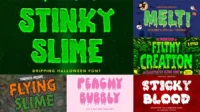In this article:
- The Top Sign Painting Fonts of 2025
- What Makes Sign Painting Fonts So Special?
- The Rich History Behind Sign Painting Typography
- Where to Use Sign Painting Fonts
- When to Avoid Sign Painting Fonts
- How to Choose the Perfect Sign Painting Font
- Tips for Designing with Sign Painting Fonts
- Creating Authentic Sign Painting Effects
- Sign Painting Font Alternatives
- Common Sign Painting Font Questions
- The Enduring Appeal of Sign Painting Typography
There’s something deeply satisfying about watching a skilled sign painter work their magic—the steady hand, the confident brush strokes, the way each letter seems to flow effortlessly onto wood, glass, or metal. It’s an art form that predates computers by centuries, yet somehow feels more relevant than ever in our digital age.
Sign painting fonts capture that handcrafted authenticity we’re all craving in 2025. They bring the soul of traditional signage into modern design work, offering that perfect blend of nostalgia and craftsmanship that makes people stop and stare.
Whether you’re designing a vintage storefront logo, creating rustic wedding invitations, or adding character to a brewery brand, the right sign painting font can transform your project from “just another design” into something that feels genuinely special.
In this comprehensive guide, we’ll explore everything you need to know about sign painting fonts—from their rich history to practical tips for using them in your own work. So grab your virtual brush, and let’s dive into the world of hand-lettered typography!
The Top Sign Painting Fonts of 2025
Not all sign painting fonts are created equal. Some capture that authentic brush stroke better than others. Here are my favorite sign painting fonts that truly deliver that handcrafted sign painter aesthetic:
Sign Painting Corporate
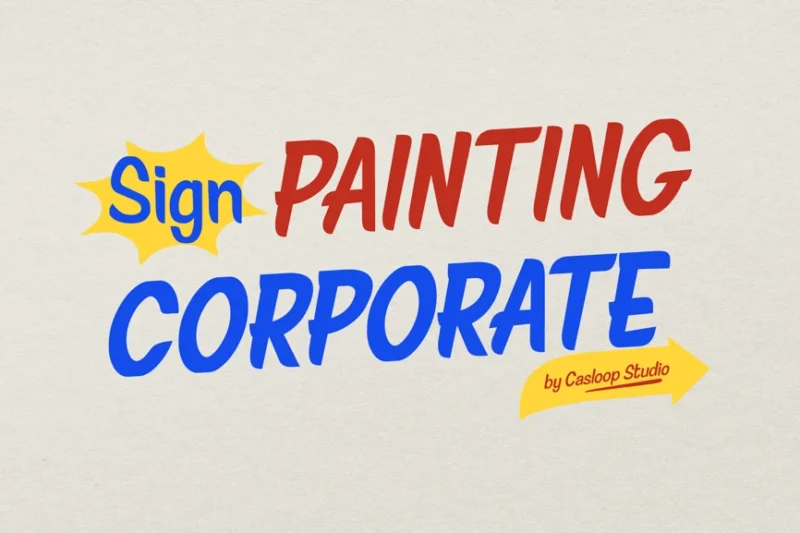
This versatile sign painting font is perfect for creating classic branding with a professional touch. Its brush-like strokes and corporate-friendly design make it ideal for businesses looking to add a handcrafted feel to their visual identity while maintaining a polished appearance.
Cowtail Brush Sign Font
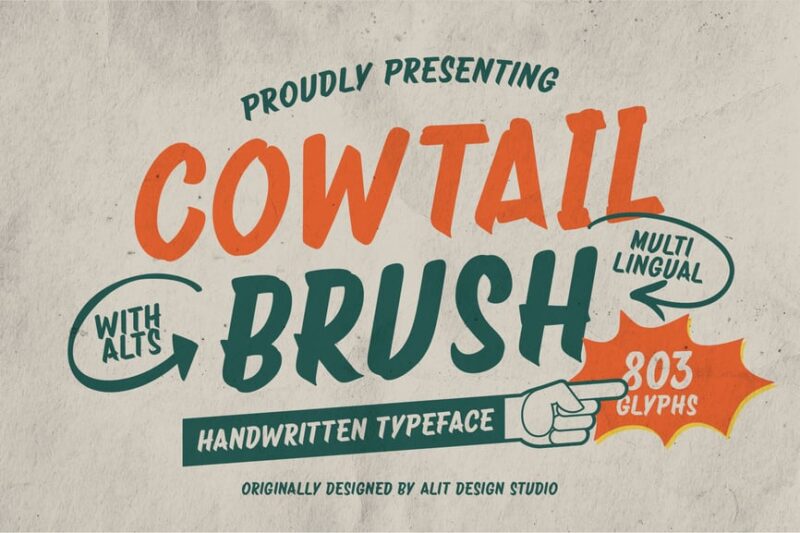
Cowtail Brush is a rustic sign painting font that captures the essence of Western-style typography. Its bold, sweeping strokes and cowboy-inspired design make it perfect for creating authentic-looking signage, logos, and branding materials with a touch of frontier charm.

Get 300+ Fonts for FREE
Enter your email to download our 100% free "Font Lover's Bundle". For commercial & personal use. No royalties. No fees. No attribution. 100% free to use anywhere.
Signs Painted
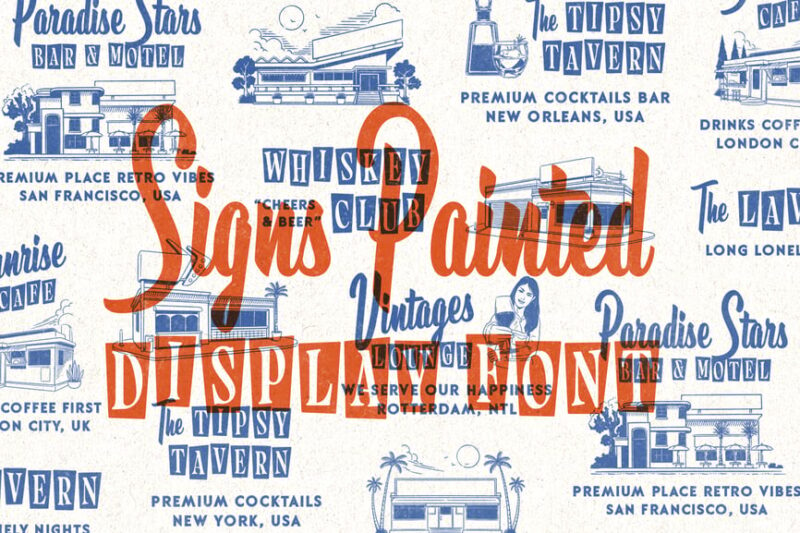
Signs Painted is a versatile display font that embodies the art of traditional sign painting. Its vintage-inspired design and decorative serifs make it an excellent choice for creating eye-catching headlines, logos, and signage that evoke a nostalgic, hand-crafted feel.
Signature Creation
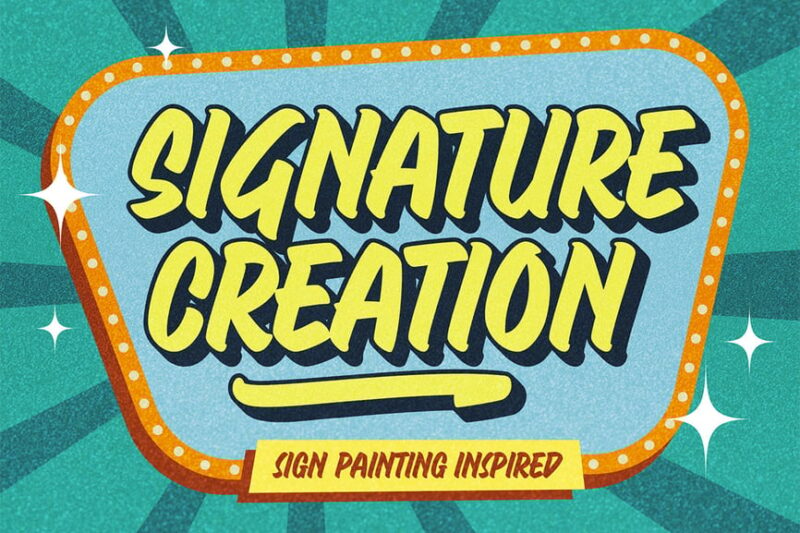
Signature Creation is a sleek and modern take on sign painting fonts. Its minimalist approach and fluid strokes make it ideal for creating elegant logos, signatures, and branding elements that combine the warmth of handwritten text with a contemporary aesthetic.
Sign Painting – Retro Casual Logo
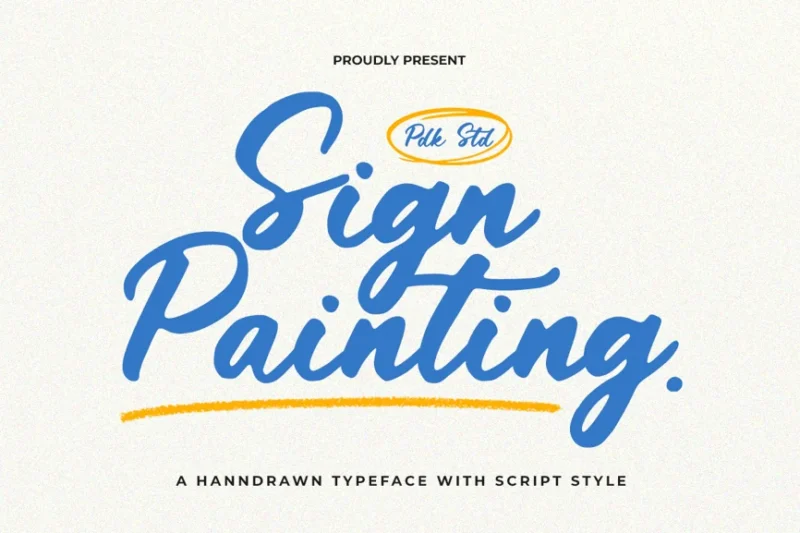
This retro-inspired sign painting font captures the casual, laid-back vibe of vintage outdoor signage. Its watercolor-like texture and relaxed letterforms make it perfect for creating logos and branding materials that evoke a sense of nostalgia and adventure.
Sign Labeling
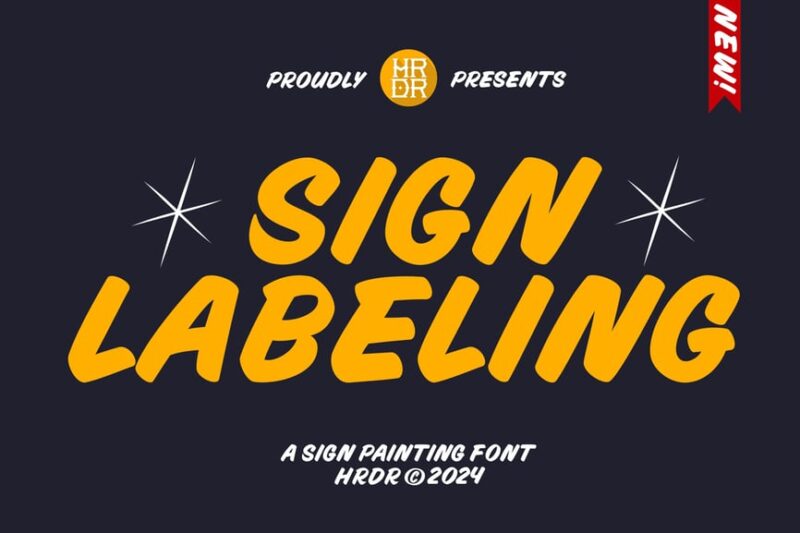
Sign Labeling is a authentic sign painting font that captures the essence of traditional hand-lettered signage. Its versatile design and attention to detail make it an excellent choice for creating everything from vintage-inspired labels to modern branding materials with a handcrafted touch.
Captain Casual
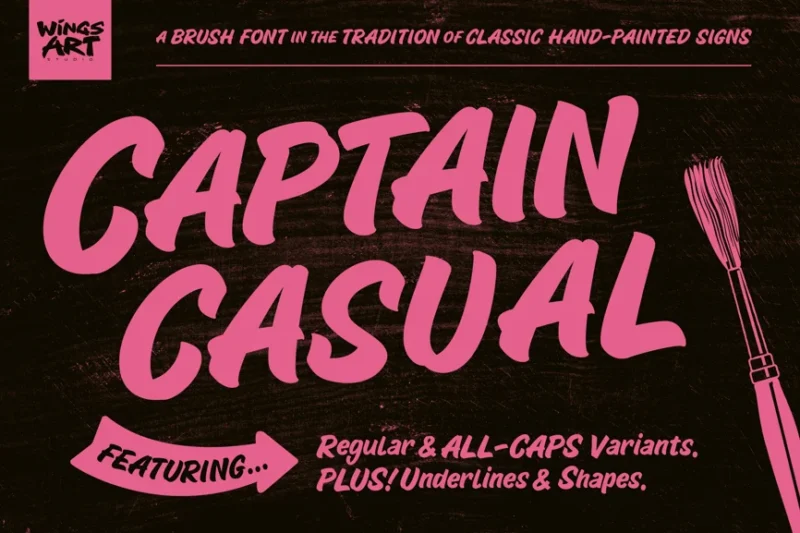
Captain Casual is a charming sans-serif font that brings the artistry of sign painting to a more relaxed, everyday style. Its friendly letterforms and subtle brush texture make it ideal for creating approachable branding and signage with a hint of handmade character.
Deal
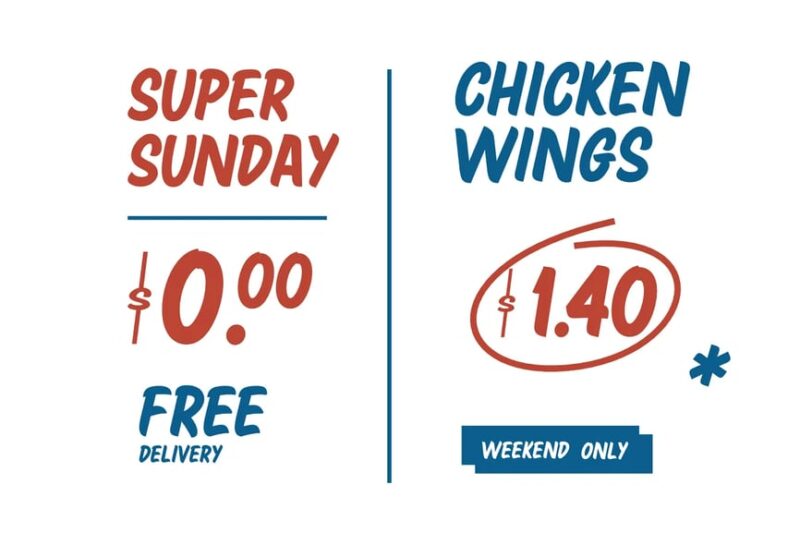
Deal is a bold, modern take on traditional sign painting fonts. Its grunge-inspired texture and strong sans-serif design make it perfect for creating impactful signage and branding that combines vintage charm with contemporary edge.
BRUSHEO
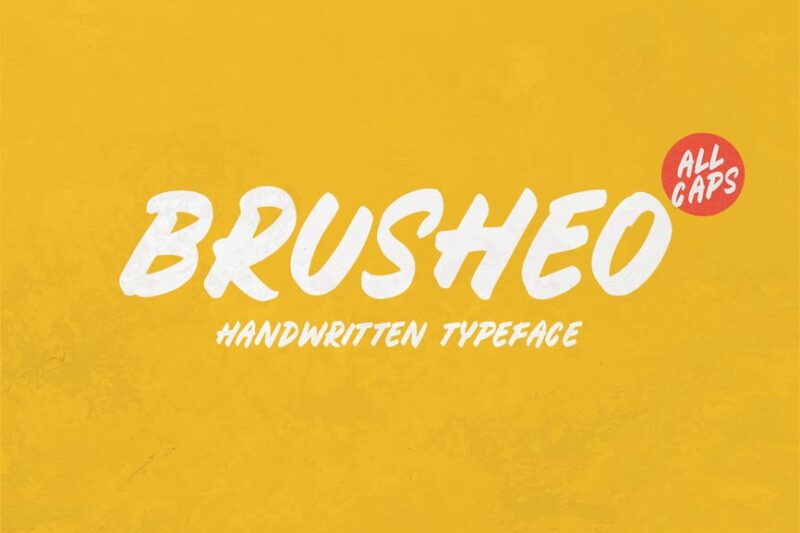
BRUSHEO is a dynamic script font that captures the fluid motion of a sign painter’s brush. Its bold strokes and natural flow make it an excellent choice for creating eye-catching logotypes and branding materials that exude energy and craftsmanship.
Narrabeen Brush
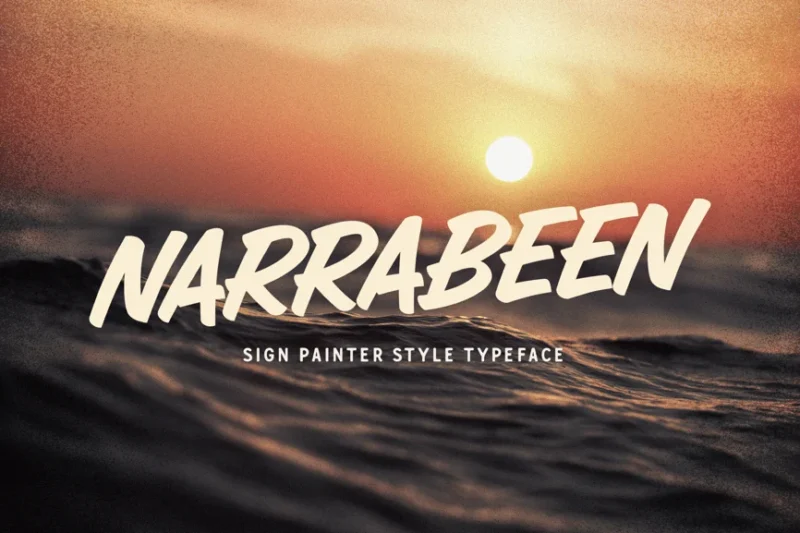
Narrabeen Brush is a lively script font inspired by the world of surf and sports. While not strictly a sign painting font, its energetic brush strokes and casual style make it suitable for creating dynamic signage and branding with a beachy, active vibe.
Lakon Rokum
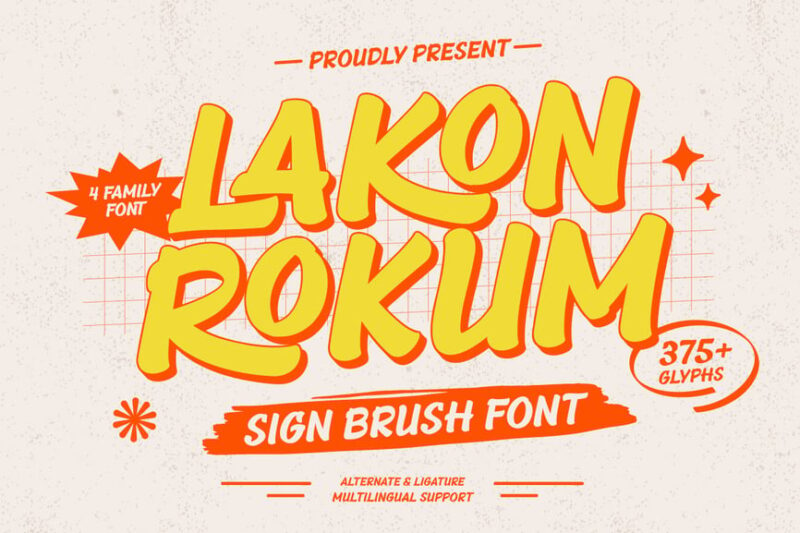
Lakon Rokum is a bold sign brush font that mimics the look of spray-painted signage. Its gritty texture and strong letterforms make it perfect for creating urban-inspired designs and edgy branding that stands out from traditional sign painting styles.
Signeta
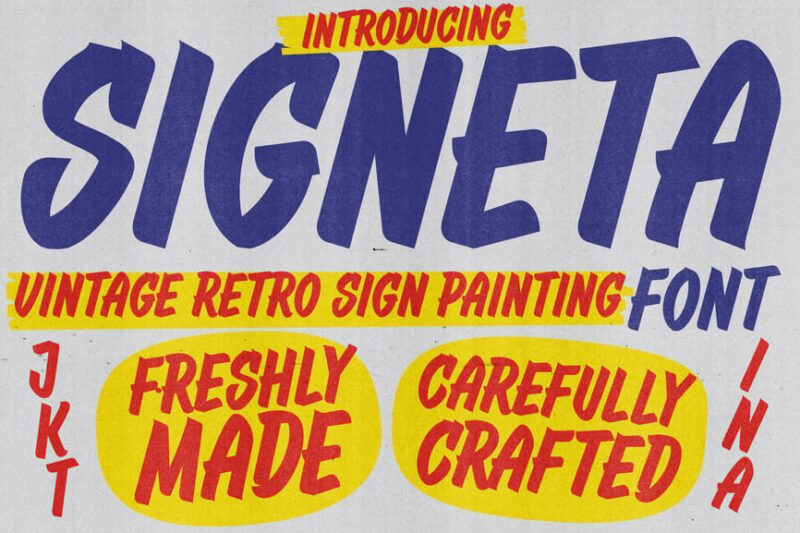
Signeta is a charming vintage sign painting font with an Italian flair. Its elegant script and carefully crafted details make it ideal for creating sophisticated signage, logos, and branding materials that evoke the timeless art of traditional sign painting.
Garage Brush Font
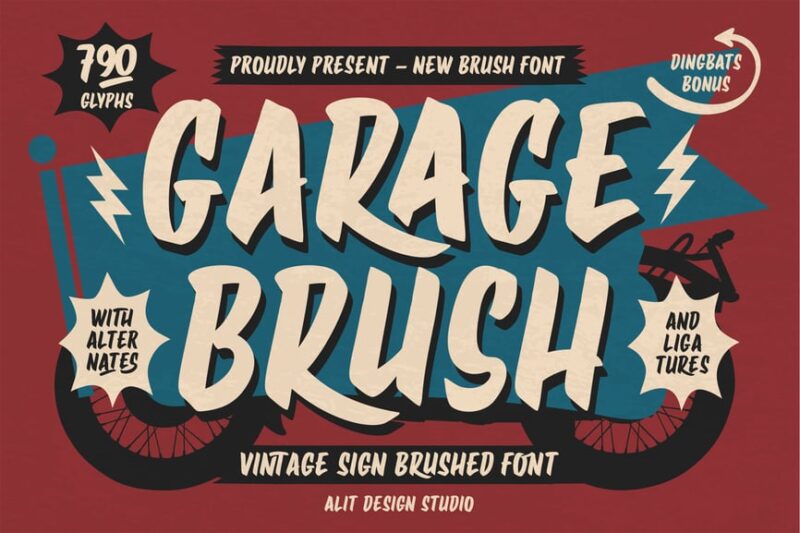
Garage Brush Font captures the raw, authentic feel of hand-painted garage signs. Its rough brush texture and bold strokes make it perfect for creating rugged, industrial-style signage and branding that embraces the DIY spirit of sign painting.
Oldtown Signer
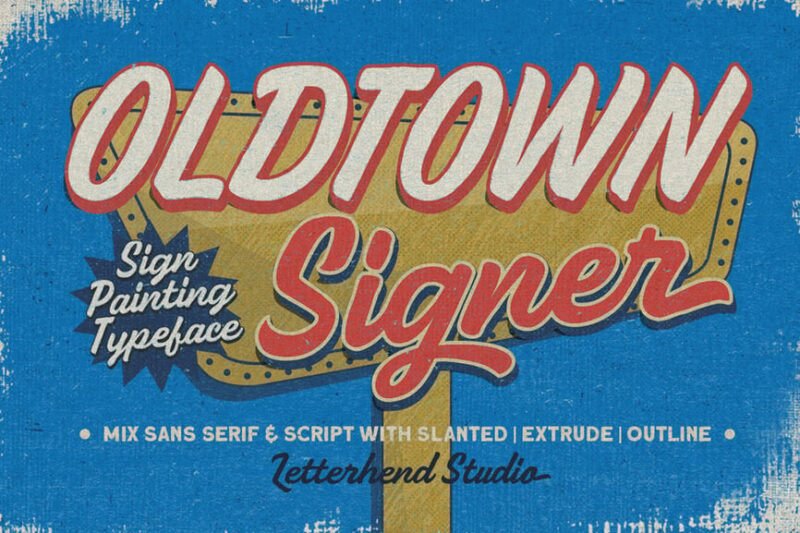
Oldtown Signer is a versatile font that combines vintage script with sans-serif elements, capturing the essence of 1960s sign painting. Its retro charm and readable style make it ideal for creating nostalgic branding and signage with a mid-century flair.
Shopie
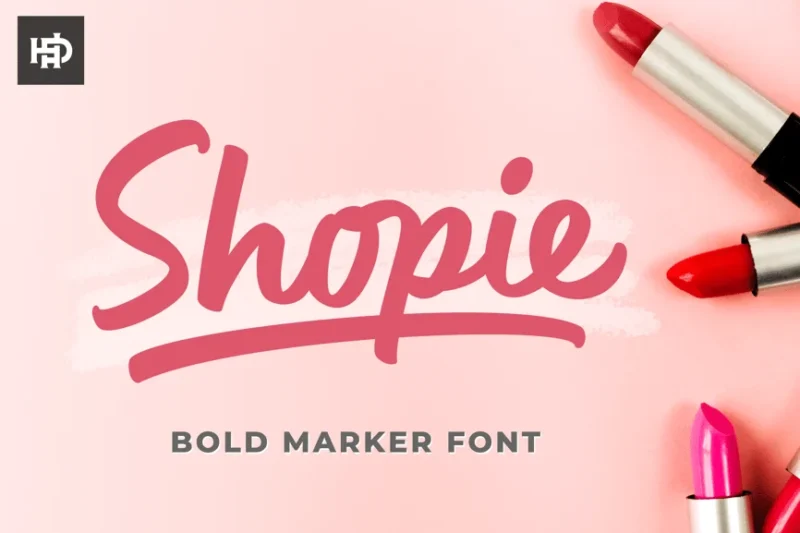
Shopie is a playful script font that mimics the look of marker-drawn signage. While not a traditional sign painting font, its casual style and hand-drawn quality make it suitable for creating friendly, approachable wordmarks and signage with a personal touch.
Pinsher
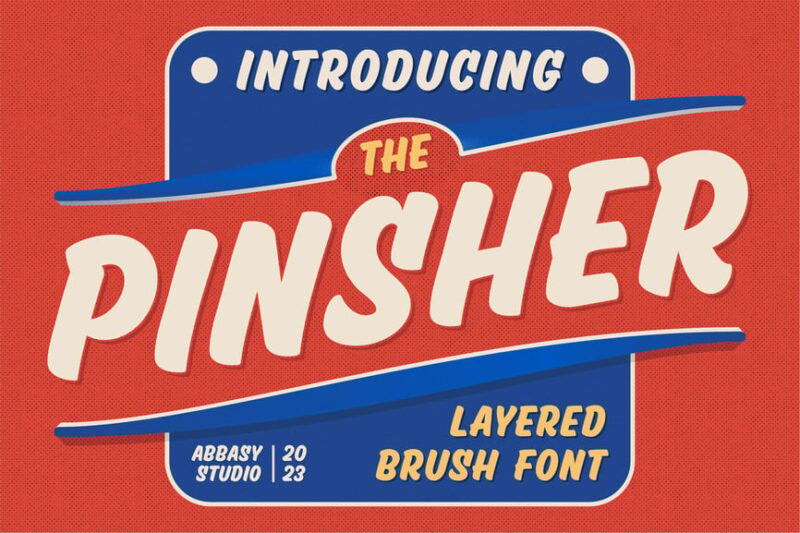
Pinsher is a bold sans-serif font that emulates the look of text written with a marker or Sharpie. Its strong, simple letterforms make it an excellent choice for creating clear, impactful signage and branding with a hand-drawn feel.
Bagha Cheap
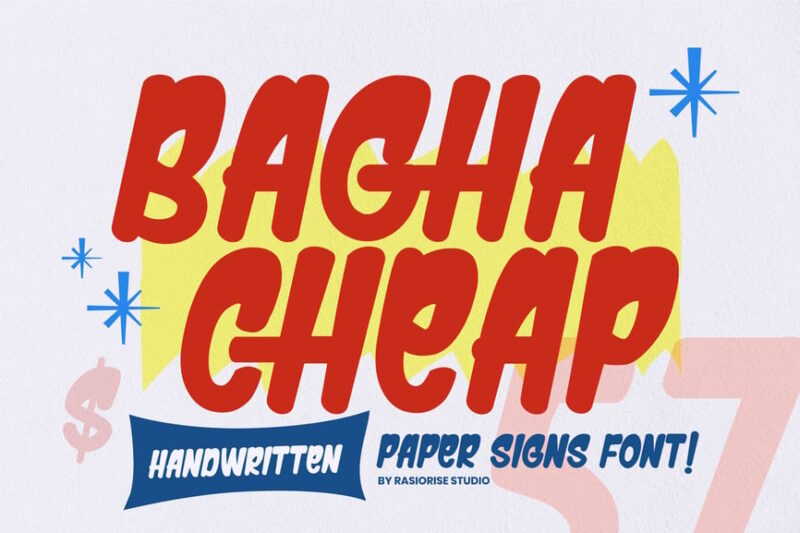
Bagha Cheap is a quirky handwritten font that captures the look of hastily scrawled paper signs. Its imperfect, marker-like strokes make it perfect for creating authentic-looking temporary signage or adding a casual, handmade touch to design projects.
Kanoz Brush Font
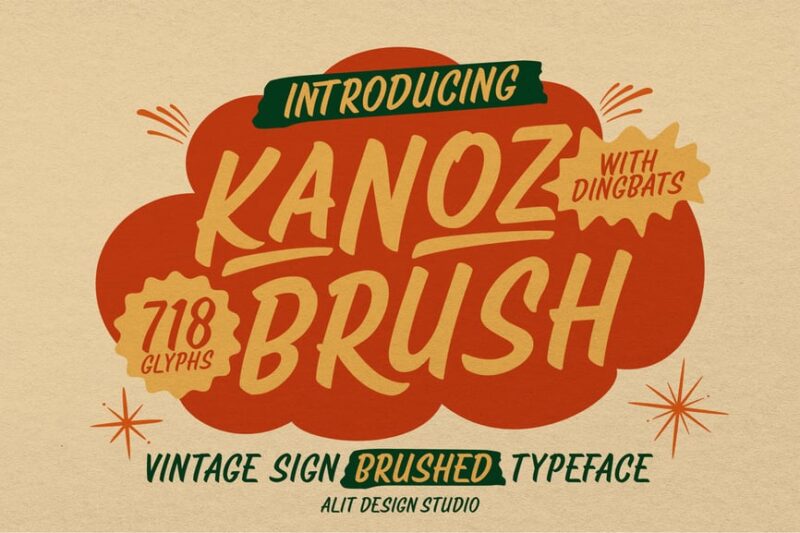
Kanoz Brush Font is a versatile sign painting font with a natural, flowing style. Its balanced brush strokes and careful detailing make it ideal for creating elegant signage and branding materials that showcase the artistry of traditional sign painting techniques.
Signmaker
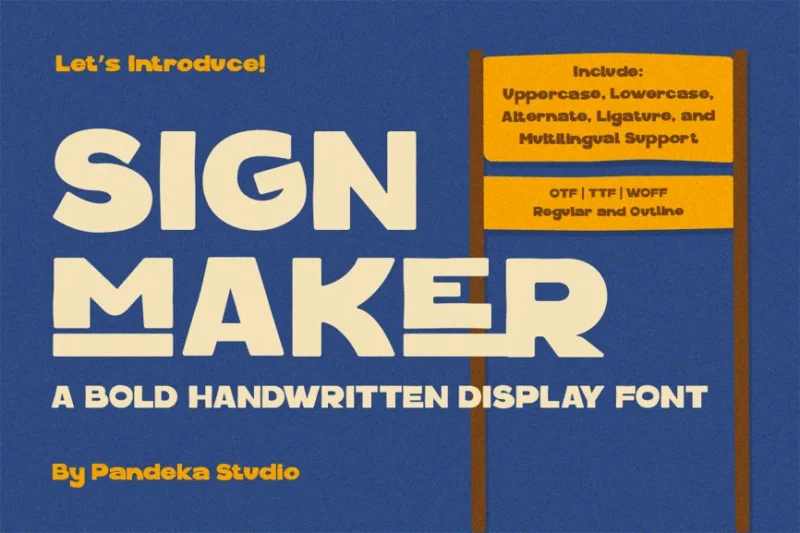
Signmaker is a vintage-inspired sans-serif font that captures the essence of retro sign painting. Its antique charm and bold letterforms make it perfect for creating authentic-looking signage for restaurants, shops, and other businesses seeking a nostalgic aesthetic.
Blocco
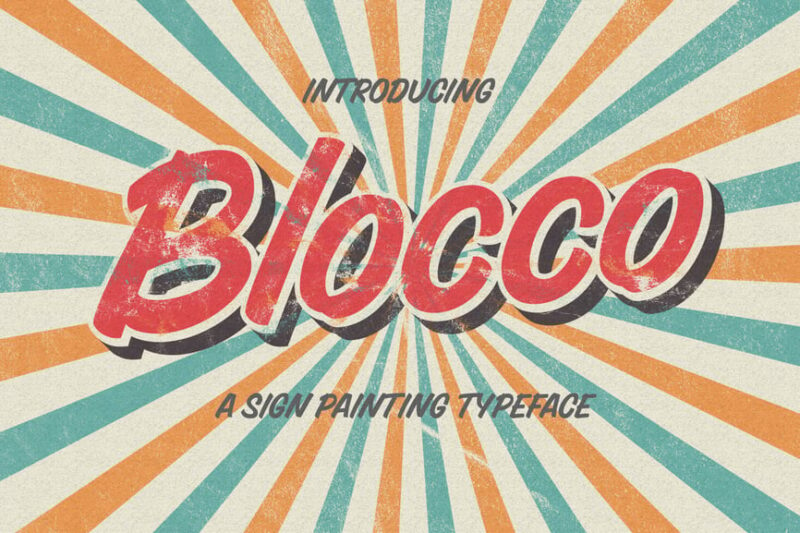
Blocco is a bold sans-serif font that brings a modern twist to sign painting typography. Its strong, geometric shapes and subtle texture make it ideal for creating impactful signage and signature-style logos with a contemporary edge.
Painto
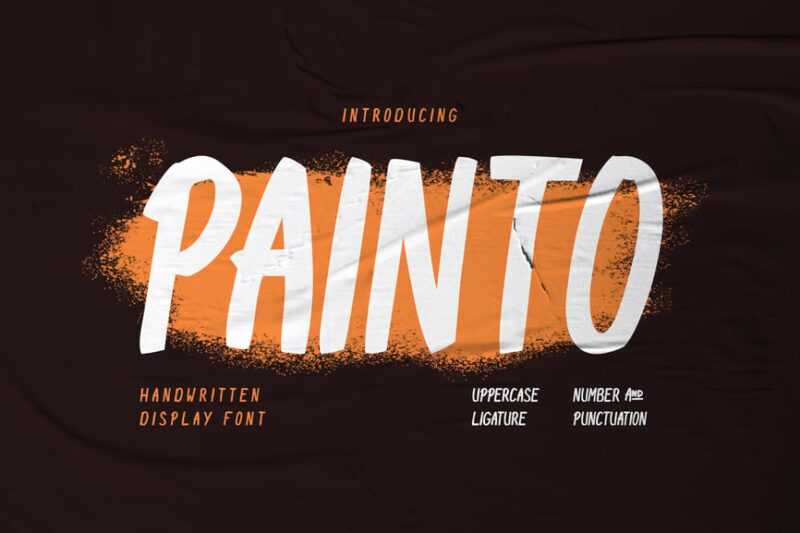
Painto is a playful, decorative font that combines elements of sign painting and sports typography. Its energetic design and paint-like texture make it perfect for creating dynamic signage and branding materials for sports teams, events, or active lifestyle brands.
Thander
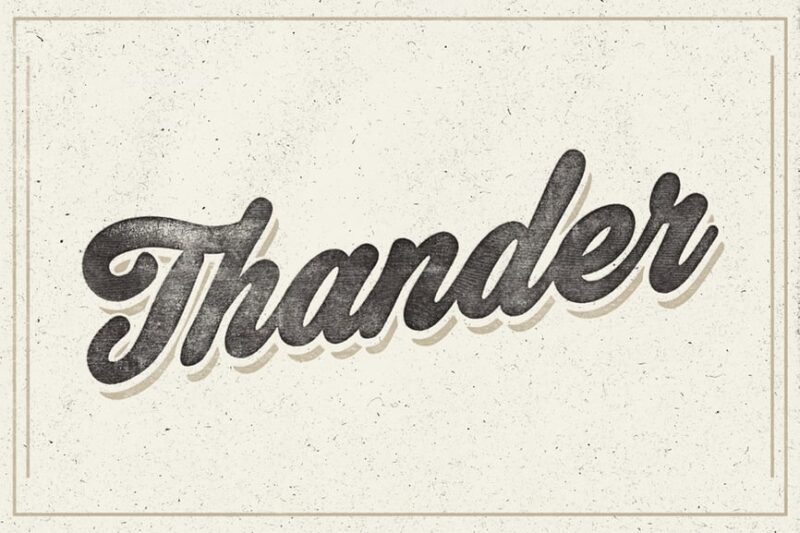
Thander is a flowing script font that captures the art of hand-lettering. While not strictly a sign painting font, its cursive style and natural rhythm make it suitable for creating elegant signage and branding materials with a personal, handcrafted touch.
Garsimon Marker
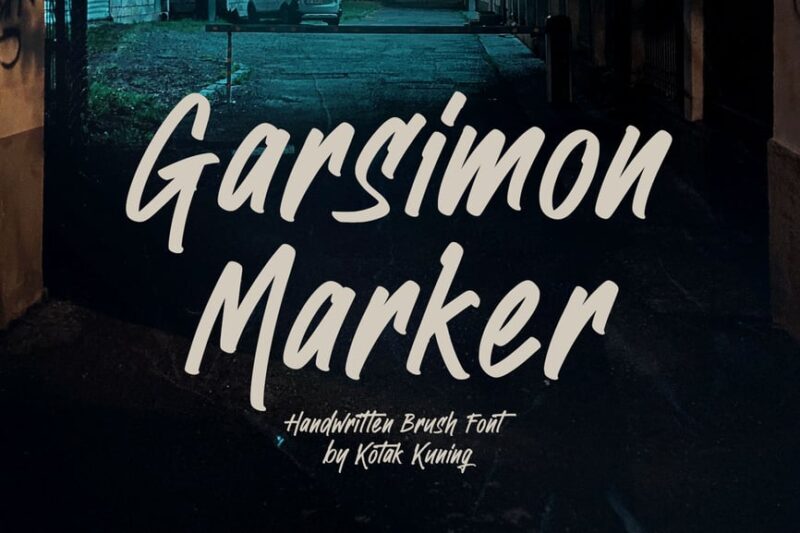
Garsimon Marker is a bold brush font that mimics the look of marker-drawn signage. Its strong strokes and slightly rough edges make it perfect for creating impactful sign painting designs with a contemporary, hand-drawn feel.
Brothership
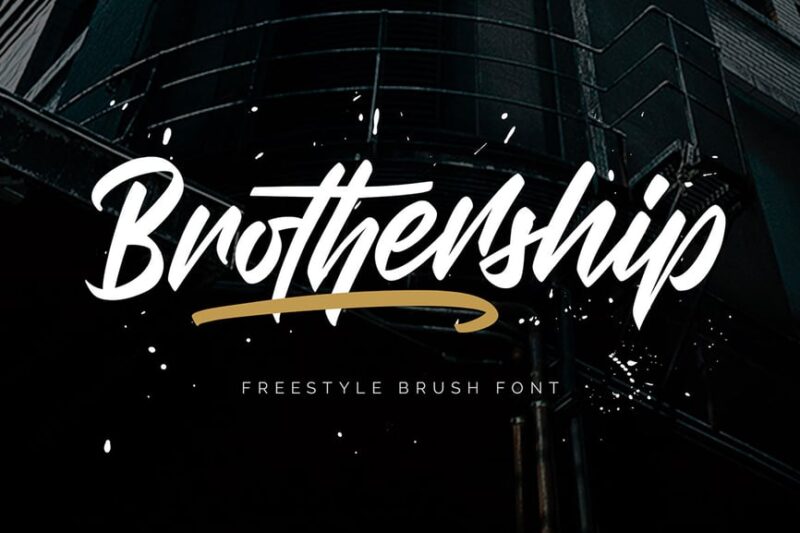
Brothership is a dynamic freestyle brush font that embodies the spirit of creative sign painting. Its expressive strokes and decorative elements make it ideal for crafting unique lettering and signage that showcases the artistry of hand-painted typography.
Lucid Fantasy
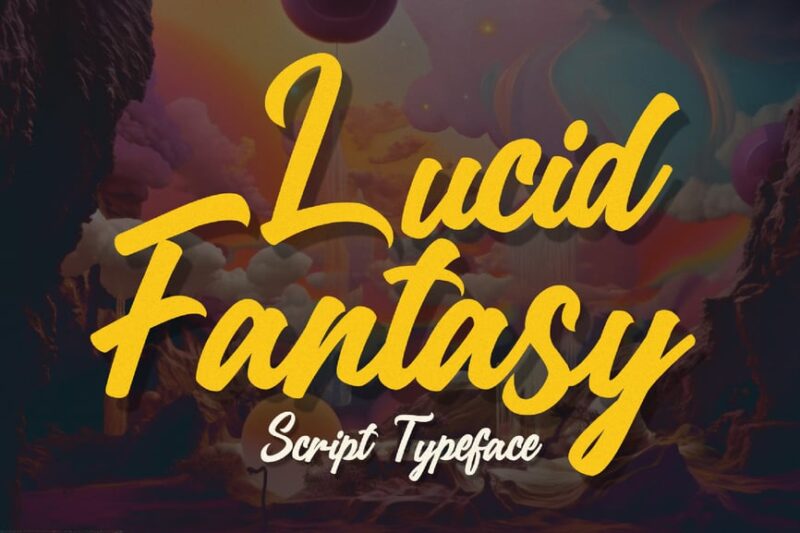
Lucid Fantasy is a flowing script typeface that combines elements of baseball-style typography with sign painting techniques. Its smooth curves and balanced design make it perfect for creating sports-themed signage and branding with a touch of vintage charm.
Stay Kool
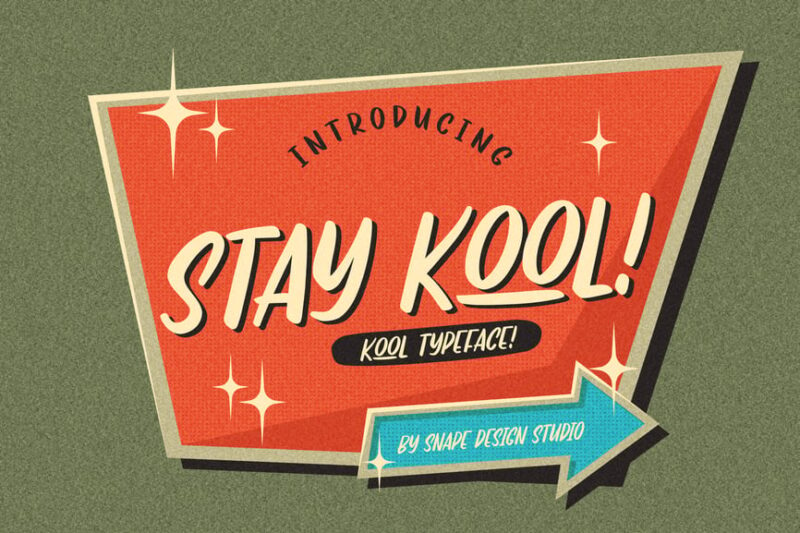
Stay Kool is a playful script font that captures the spirit of casual sign painting. Its relaxed style and subtle texture make it ideal for creating friendly, approachable signage and branding materials, particularly for sports-related or youth-oriented designs.
George Nomsay
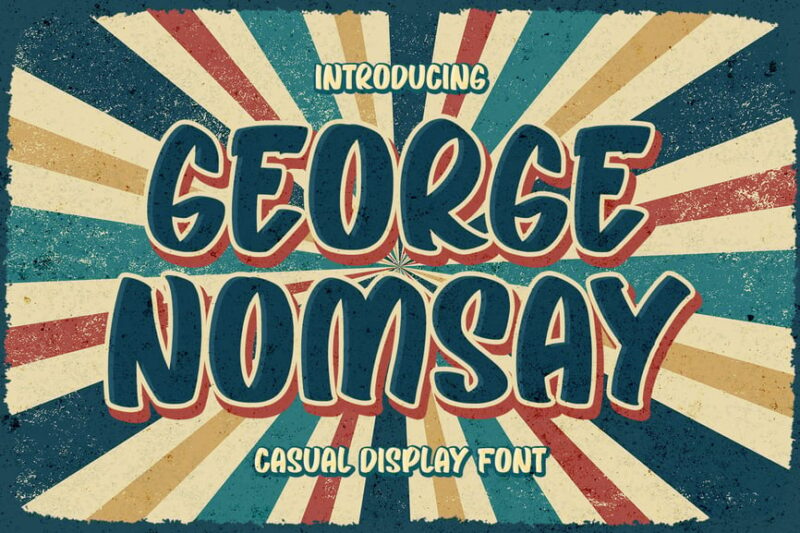
George Nomsay is a retro-inspired decorative font that evokes the style of 1960s sign painting. Its bold, Cooper-like design makes it perfect for creating vintage-looking signage and eye-catching headlines that capture the essence of mid-century typography.
Odesya Brush
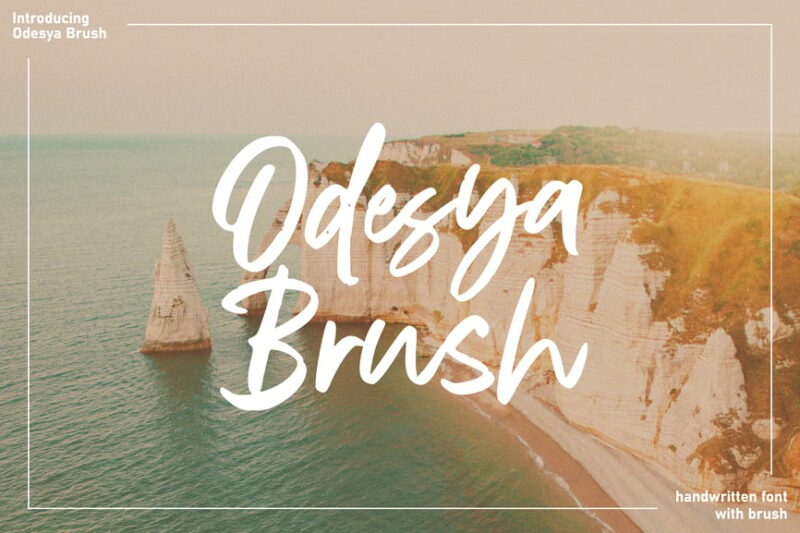
Odesya Brush is a flowing script font that embodies the art of sign painting. Its natural brush strokes and balanced design make it ideal for creating elegant signage, signature-style logos, and branding materials with a handcrafted, artistic touch.
Deertail Brush Typeface
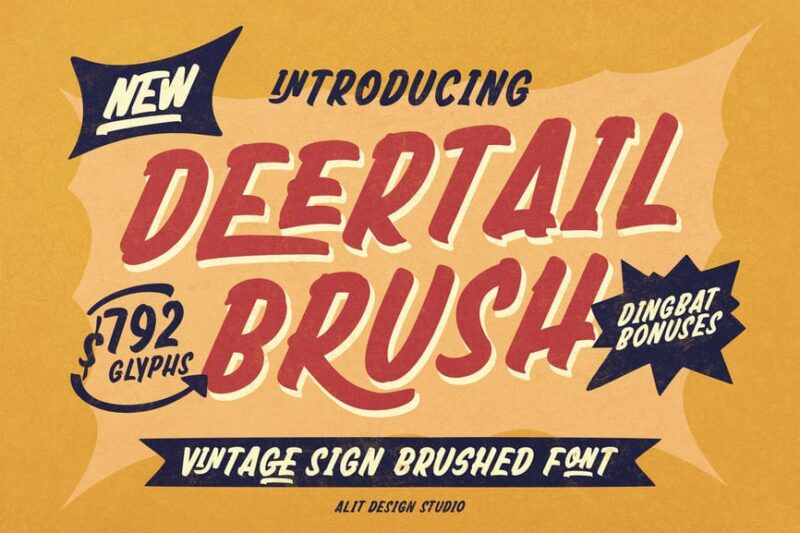
Deertail Brush is a dynamic typeface that combines elements of sports typography and sign painting. Its energetic brush strokes and bold design make it perfect for creating impactful signage and branding materials for sports teams, outdoor brands, or active lifestyle products.
Retro Sign
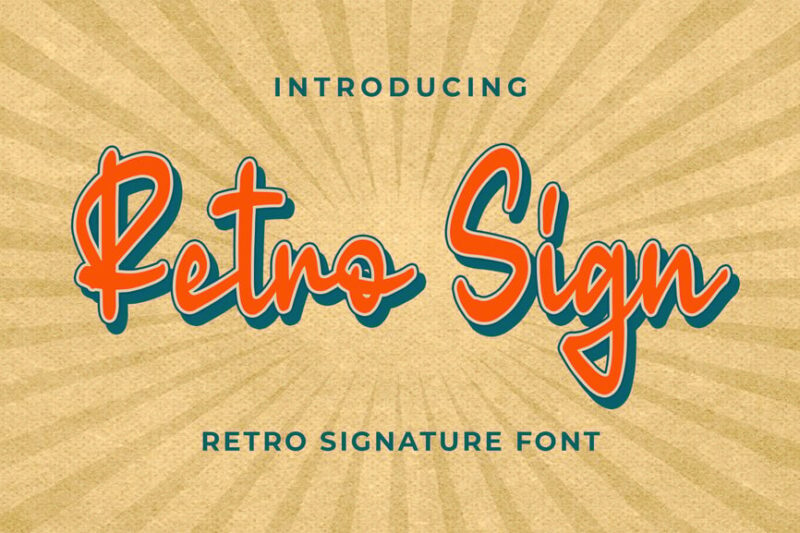
Retro Sign is a nostalgic signature font that captures the essence of vintage sign painting. Its fluid strokes and carefully crafted details make it ideal for creating authentic-looking retro signage, logos, and branding materials that evoke the golden age of hand-painted signs.
Century of Brush Font
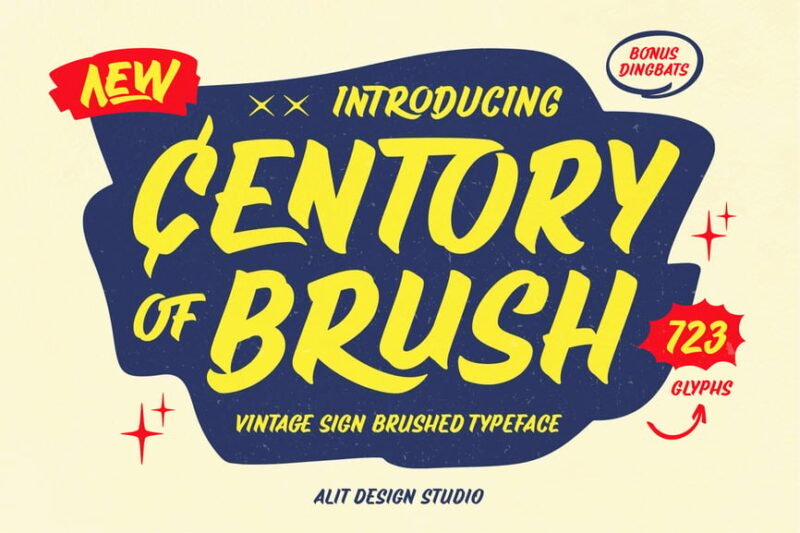
Century of Brush Font is a versatile typeface that showcases the timeless art of brush lettering. Its natural brush strokes and balanced design make it perfect for creating a wide range of sign painting projects, from elegant signage to bold branding materials.
Molly Beats Handwritten Font
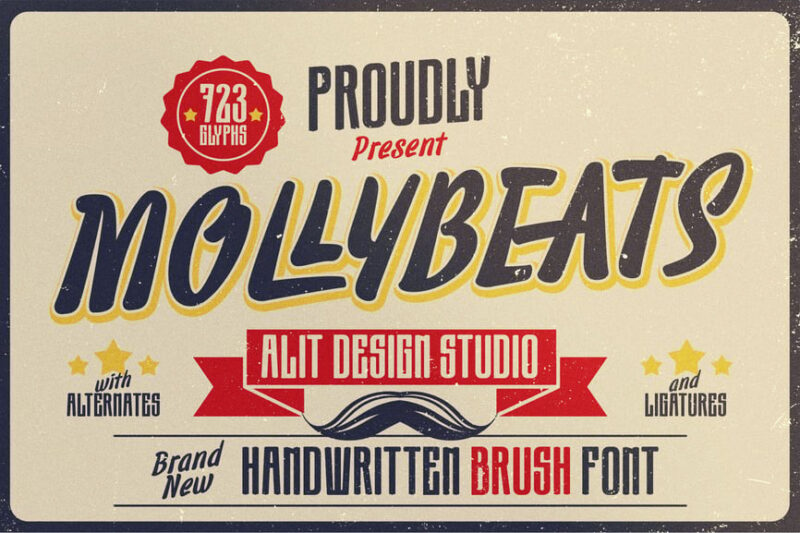
Molly Beats is a lively handwritten font that brings a fresh, youthful energy to sign painting design. Its playful style and natural flow make it ideal for creating dynamic signage and branding materials for sports-related or youth-oriented projects.
Local Groceries
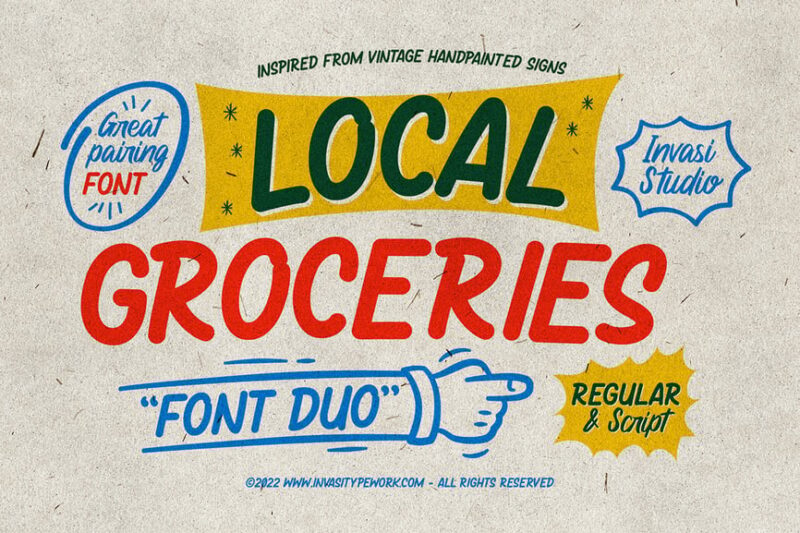
Local Groceries is a charming handwritten font duo that captures the friendly spirit of neighborhood signage. Its versatile design makes it perfect for creating authentic-looking sign painting projects for local businesses, particularly those in the food and retail sectors.
VELCRO
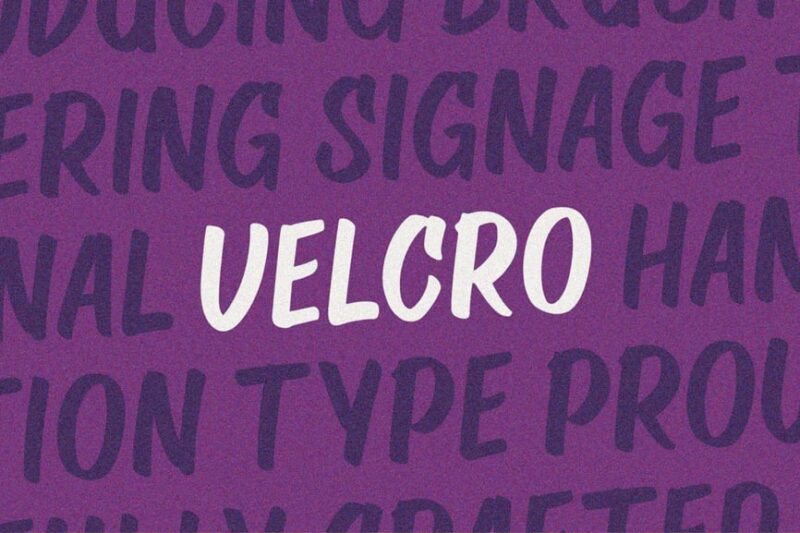
VELCRO is a bold brush font that combines elements of script and sans-serif styles, embodying the versatility of sign painting typography. Its strong strokes and signature-like qualities make it ideal for creating impactful signage and branding with a handcrafted feel.
HOARSE
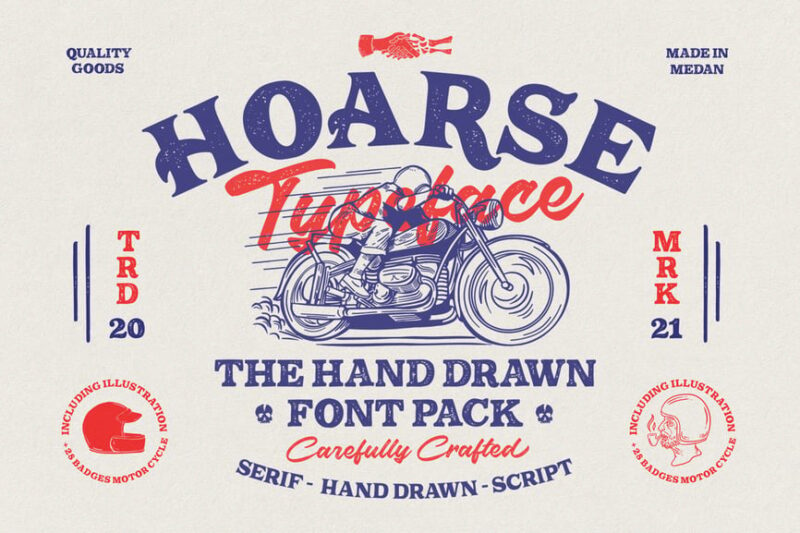
HOARSE is a diverse font pack that includes styles suitable for sign painting and badge design. While not exclusively a sign painting font, its versatile collection of typefaces makes it useful for creating a wide range of signage and branding materials, particularly for sports-related projects.
What Makes Sign Painting Fonts So Special?
Sign painting fonts aren’t just regular typefaces with a rustic filter slapped on top. The best ones capture the genuine characteristics that make traditional sign painting so captivating. Let’s break down what gives these fonts their authentic appeal:
Natural Brush Stroke Variation
Real sign painters don’t create perfectly uniform letters. Each stroke varies slightly based on brush angle, paint consistency, and the natural movement of the human hand. Quality sign painting fonts replicate this organic variation.
You’ll notice subtle differences in stroke thickness, slightly uneven edges, and that characteristic “drag” at the end of strokes where the brush lifts off the surface. These imperfections are what make the letters feel alive and handcrafted.
Traditional Letter Construction
Sign painters learned their craft through apprenticeships and sign painting manuals dating back over a century. This created a distinctive style of letter construction—think generous curves, elegant swashes, and classic proportions that follow time-tested principles.
The best sign painting fonts honor these traditional forms. They feature the broad, confident strokes of flat brushes and the graceful terminals that come from years of practiced technique.
Authentic Texture and Aging
Many sign painting fonts include subtle texture that mimics paint on various surfaces—whether it’s the slight roughness of paint on wood grain, the crackling of aged paint, or the smooth flow of fresh enamel on glass.
This textural quality helps designs feel like they could have been painted yesterday or discovered on a weathered storefront from the 1950s. It’s that perfect balance of craftsmanship and character.
The Rich History Behind Sign Painting Typography
Understanding where sign painting fonts come from makes using them so much more meaningful. Let’s take a quick journey through sign painting history:
Sign painting emerged as a skilled trade in the late 1800s as businesses competed for attention on busy city streets. Before neon and digital displays, hand-painted signs were the primary way to advertise everything from barber shops to general stores.
The golden age of sign painting stretched from the 1920s through the 1960s. During this era, sign painters developed distinctive regional styles. East Coast signs often featured more ornate, decorative lettering, while West Coast signage leaned toward bolder, simpler designs influenced by the automotive and entertainment industries.
Sign painters relied on instructional books like “The Speedball Textbook” and “Atkinson Sign Painting” to learn letterforms. These manuals standardized certain styles while still leaving room for personal flair. You can see echoes of these classic forms in today’s sign painting fonts.
The craft nearly died out in the 1980s and 90s as vinyl lettering and digital printing took over. But something beautiful happened in the 2025s—a revival. Young artists rediscovered the meditative practice of sign painting, and designers recognized the warmth that hand-lettered work brings to brands.
Today’s sign painting fonts bridge the gap between traditional craftsmanship and modern efficiency. They let designers achieve that authentic painted look without needing years of brush training (though learning actual sign painting is incredibly rewarding if you have the time!).
Where to Use Sign Painting Fonts
Sign painting fonts have incredible versatility, but they really shine in certain contexts. Here’s where these typefaces work their magic:
Restaurant and Hospitality Branding
Breweries, coffee shops, farm-to-table restaurants, and boutique hotels love sign painting fonts for good reason. These typefaces convey authenticity, craftsmanship, and a connection to tradition—exactly what many hospitality brands want to communicate.
They work beautifully on menu boards, window signage, coasters, merchandise, and anywhere you want that welcoming, handcrafted feel.
Vintage and Retro Designs
Creating designs that feel genuinely vintage? Sign painting fonts are your secret weapon. They instantly transport designs back to mid-century America without feeling like a caricature.
Use them for vintage posters, retro packaging, throwback event branding, or any project celebrating nostalgia and Americana.
Rustic and Handmade Brands
Artisan brands, craft makers, organic products, and businesses emphasizing traditional methods benefit enormously from sign painting typography. These fonts communicate “made by hand with care” better than almost any other typeface style.
They’re perfect for product labels, business cards, storefront signage, and packaging that needs to stand out on crowded shelves.
Event Invitations and Stationery
Rustic weddings, barn parties, vintage celebrations, and casual gatherings gain instant personality with sign painting fonts. They bring warmth and approachability to invitations while still feeling special and thoughtfully designed.
Vehicle Graphics and Murals
Some of the most iconic uses of sign painting were on delivery trucks and storefronts. That tradition continues today. Sign painting fonts work exceptionally well scaled up large for vehicle wraps, wall murals, and oversized signage.
When to Avoid Sign Painting Fonts
While I love sign painting fonts, they’re not right for every project. Here are situations where you might want to consider alternatives:
Corporate and Professional Services
Law firms, financial institutions, medical practices, and corporate businesses typically need to project authority, precision, and modernity. Sign painting fonts, with their casual, handcrafted vibe, might undermine that professional image.
In these contexts, stick with clean sans serifs or elegant serifs that convey trustworthiness and sophistication.
Tech and Digital Products
Software companies, tech startups, and digital products usually benefit from more contemporary typefaces. Sign painting fonts can feel at odds with innovation and cutting-edge technology.
That said, there are exceptions—a tech company emphasizing human connection or accessibility might thoughtfully incorporate sign painting elements.
Body Text and Long-Form Reading
Sign painting fonts work best at display sizes—headlines, titles, short phrases. They’re not designed for readability at small sizes or in lengthy paragraphs.
For body text, always pair your sign painting headers with a clean, readable font optimized for longer reading.
Minimalist and Modern Aesthetics
If your design calls for sleek minimalism or ultra-modern sophistication, sign painting fonts will clash. They carry inherent warmth and nostalgia that conflicts with stark, minimalist design principles.
How to Choose the Perfect Sign Painting Font
With so many options available, how do you pick the right sign painting font for your project? Here’s my process:
Consider Your Brand’s Personality
Start by defining the mood you’re after. Friendly and approachable? Bold and confident? Elegant and refined? Rugged and masculine?
A delicate script-style sign painting font conveys very different energy than a bold, block-letter brush font. Match the font’s personality to your brand’s character.
Think About Historical Context
Different eras of sign painting had distinct styles. 1920s signage featured more elaborate, decorative elements. 1950s signs embraced streamlined simplicity. 1970s work often incorporated funkier, more expressive forms.
If you’re evoking a specific time period, research the sign painting styles from that era and choose fonts that authentically represent that moment in design history.
Evaluate Authenticity
The best sign painting fonts come from designers who studied actual hand-painted signage. Look for fonts with natural variation between letters, realistic brush textures, and letterforms that follow traditional sign painting principles.
Avoid fonts that look too perfect or uniform—real sign painting has organic irregularity that gives it life.
Test Readability
Some sign painting fonts prioritize character over clarity. That works great for short headlines but can become problematic for longer phrases.
Always test your chosen font at the actual size it will be used. What looks great at poster size might become muddy at business card dimensions.
Check the Character Set
Make sure your chosen font includes all the characters, numbers, and symbols you’ll need. Some specialty sign painting fonts have limited character sets that might not include essential punctuation or international characters.
Tips for Designing with Sign Painting Fonts
Ready to put these fonts to work? Here are my tried-and-true tips for making the most of sign painting typography:
Embrace Asymmetry
Real sign painters often worked with the natural flow of letters rather than forcing rigid alignment. Don’t be afraid to let letters sit slightly off-baseline or vary in size to create more organic, dynamic compositions.
Layer Your Typography
Traditional sign painters frequently used multiple layers—outlines, shadows, highlights—to make letters pop off surfaces. Experiment with layering your sign painting fonts to add depth and dimension.
Pair Thoughtfully
When combining a sign painting font with other typefaces, create contrast. Pair an ornate script sign painting font with a clean sans serif for supporting text. Or combine a bold brush font with a simple slab serif for balance.
Avoid pairing two different sign painting fonts together—it usually feels cluttered and confused.
Mind Your Spacing
Sign painting fonts often need tighter tracking than default settings. The letters were designed to nestle together naturally, mimicking how sign painters worked. Experiment with reducing letter spacing to achieve more authentic results.
Add Contextual Elements
Enhance your sign painting typography with complementary design elements—hand-drawn borders, vintage badges, ribbon banners, or illustrations that match the era and style of your font choice.
Consider the Background
Traditional sign painting happened on wood, brick, glass, and metal. Your background choices should support that handcrafted aesthetic. Textured backgrounds, wood grain, aged paper, or solid colors that recall vintage paint chips work beautifully.
Creating Authentic Sign Painting Effects
Want to make your sign painting fonts look even more realistic? Try these techniques:
Add Subtle Texture
Real painted signs have slight texture from paint application. Layer subtle grain, noise, or texture overlays to mimic this quality. Just keep it subtle—you want to suggest paint, not overwhelm the letterforms.
Incorporate Imperfections
Small irregularities make designs feel handcrafted. Try slightly rotating individual letters, adding minor paint drips, or including tiny gaps in strokes where paint coverage wasn’t perfectly even.
Use Period-Appropriate Colors
Research color palettes from your target era. Sign painters worked with limited color ranges determined by available paints. Using historically accurate colors makes designs feel more authentic.
Study Real Sign Painting
The best way to improve your use of sign painting fonts? Study actual hand-painted signs. Notice how letters connect, where strokes naturally thin or thicken, and how paint interacts with different surfaces.
Follow contemporary sign painters on social media, visit vintage sign museums, or explore old photographs of storefronts. This research will inform your digital designs.
Sign Painting Font Alternatives
If sign painting fonts don’t quite fit your needs, consider these related styles that capture similar handcrafted qualities:
Brush Script Fonts
More flowing and cursive than traditional sign painting, brush scripts bring elegant, sweeping strokes to designs. They work beautifully for weddings, beauty brands, and feminine products.
Vintage Serif Fonts
For a more refined take on vintage style, classic serif fonts from the same eras—like Clarendon or Egyptian-style slab serifs—pair beautifully with sign painting elements while offering better readability.
Hand-Drawn Display Fonts
If you love the handmade quality but want something less specifically “sign painting,” explore the broader category of hand-drawn display fonts. These capture crafted authenticity in diverse styles.
Typewriter and Stamp Fonts
For vintage vibes with a different flavor, typewriter and rubber stamp fonts evoke similar nostalgia while feeling more administrative or documentary in nature.
Common Sign Painting Font Questions
Let’s address some frequently asked questions about working with sign painting fonts:
What is sign painting typography?
Sign painting typography refers to letterforms created using traditional sign painting techniques—typically with brushes and enamel paint on surfaces like wood, glass, or metal. Digital sign painting fonts recreate the characteristics of these hand-painted letters.
Are sign painting fonts free?
Some sign painting fonts are available for free personal use, while others require licensing for commercial projects. Always check the specific license for any font you’re considering. Quality professional sign painting fonts typically require purchase but offer more authentic details and complete character sets.
What’s the difference between sign painting and hand lettering?
Sign painting is a specific craft tradition using brushes and paint to create letters on signage. Hand lettering is a broader term encompassing any letters drawn or created by hand, including calligraphy, chalk lettering, or marker work. Sign painting is one type of hand lettering with its own distinct techniques and aesthetic.
Can I learn actual sign painting?
Absolutely! While this article focuses on fonts, learning real sign painting is incredibly rewarding. Look for workshops in your area, study instructional books like “The Speedball Textbook,” and practice with quality brushes and enamel paint. Many cities have sign painting revivals with communities eager to share knowledge.
What software works best with sign painting fonts?
Sign painting fonts work in any standard design software—Adobe Illustrator, Photoshop, InDesign, Canva, or even Microsoft Word. Vector-based programs like Illustrator offer more flexibility for manipulating and layering the letterforms.
The Enduring Appeal of Sign Painting Typography
We’ve covered a lot of ground in this guide—from the rich history of sign painting to practical tips for using these fonts in modern designs. But what is it about sign painting typography that continues to captivate us in 2025?
I think it comes down to authenticity. In an increasingly digital world, we crave evidence of human touch. Sign painting fonts carry the DNA of skilled craftspeople who spent years perfecting their art. When we use these typefaces, we’re connecting to that tradition and bringing some of its soul into our own work.
These fonts remind us that design isn’t just about perfection—it’s about character, personality, and storytelling. The slight wobble in a brushstroke, the organic variation between letters, the evidence of a human hand—these “imperfections” are actually what make sign painting fonts feel so right.
Whether you’re designing a craft brewery logo, creating vintage wedding invitations, or adding character to a storefront, the right sign painting font brings immediate warmth and authenticity. It tells viewers that what they’re looking at was made with care, thought, and respect for tradition.
So the next time you’re starting a project that needs some handcrafted magic, consider reaching for a sign painting font. Study the real craft behind the letterforms. Play with composition and color. And don’t be afraid to let things be a little imperfect—after all, that’s where the beauty lives.
Now it’s your turn. Which sign painting font speaks to your next project? Drop a comment below and share what you’re working on. I’d love to see how you’re bringing this timeless craft into your modern designs!

